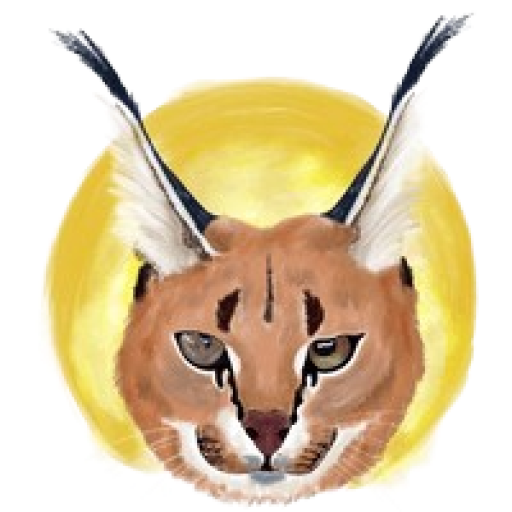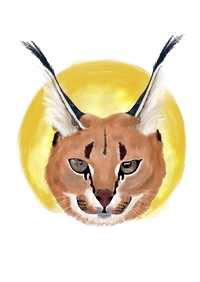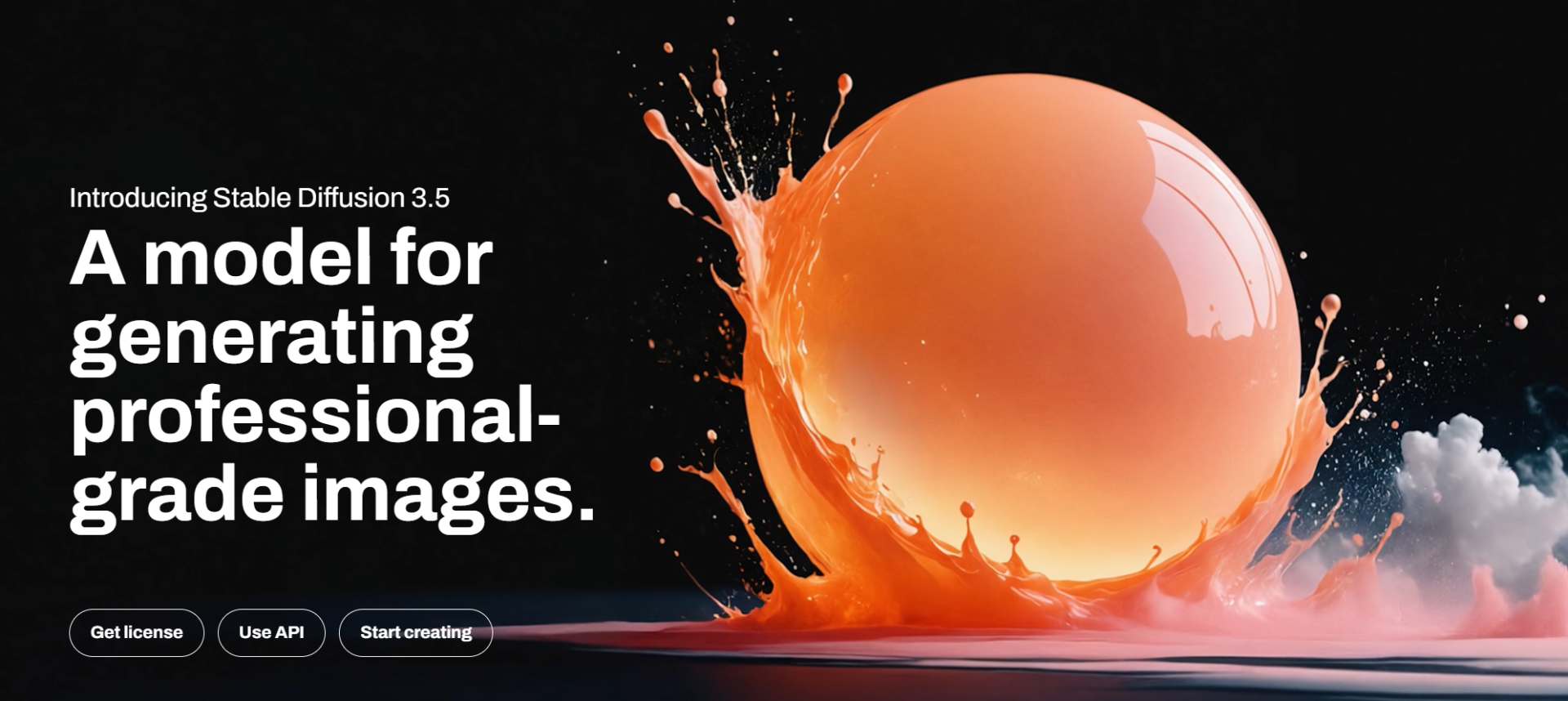Key Takeaways
What is Stable Diffusion? A powerful AI text-to-image generator developed by Stability AI that transforms written descriptions into detailed visual content across various artistic styles and formats.
- 🖼️ Creates high-quality images in diverse styles (photorealistic, 3D, painting, line art) with exceptional detail and artistic merit
- 🚀 Multiple access options including web interfaces (DreamStudio, Stable Assistant), API, or self-hosted installation
- ⚙️ Comprehensive editing tools (inpainting, outpainting, background manipulation) enhance workflow versatility
- 💻 Resource-intensive for local installation, requiring NVIDIA GPU with at least 8GB VRAM
- 📊 Flexible pricing structure with free tier (10 images daily) and paid plans starting at $7/month
- 🔄 Open-source foundation enables significant customization but increases technical complexity
This review covers: features, integrations, customization, hosting, pricing, pros and cons, and real-world use cases.
What is Stable Diffusion?
Stable Diffusion is an AI-powered text-to-image generator developed by Stability AI that uses deep learning techniques to transform written descriptions into detailed visual content across various artistic styles and formats.
Use Cases
🎨 Creative Professionals
- Digital Artists and Illustrators: Generate concept art, character designs, and artistic compositions as starting points or finished pieces
- Graphic Designers: Create custom visuals for marketing materials, website elements, and brand assets
- Product Designers: Visualize product concepts and variations before physical prototyping
- Game Developers: Produce environment designs, character concepts, and texture elements
📱 Marketing and Content Creation
- Digital Marketers: Generate unique visuals for social media campaigns, advertisements, and website content
- Content Creators: Create thumbnails, featured images, and visual elements for blogs, videos, and online publications
- Advertisers: Develop custom advertising visuals that precisely match campaign requirements
🎓 Education and Research
- Educators: Create visual aids and teaching materials to illustrate complex concepts
- Scientific Illustrators: Generate detailed scientific visualizations based on specific parameters
- Researchers: Visualize data patterns and conceptual frameworks through custom imagery
💻 Software Development
- UI/UX Designers: Generate interface elements, icons, and design components
- App Developers: Create visual assets and placeholder graphics during development
- Web Designers: Generate custom website elements, backgrounds, and visual themes
Overview
🔍 What makes Stable Diffusion unique? At its core, it’s a latent text-to-image diffusion model that iteratively refines random noise into coherent, detailed visuals that accurately represent user descriptions using deep learning techniques.
🚀 Latest advancements? Stable Diffusion 3.5 introduces superior prompt adherence, diverse style generation, and improved architectural design by leveraging a combination of U-Net model and Residual Neural Network (ResNet).
⚙️ How is it deployed? Users can access it via web-based interfaces like DreamStudio and Stable Assistant, integrate through an API, or deploy on their own infrastructure through self-hosting.
💡 What distinguishes it? Its open-source foundation enables customization and adaptation for specific use cases, fostering a vibrant community of developers who continue to expand and enhance its capabilities.
Key Features
🖼️ Which image models are available? Stable Diffusion offers several specialized models:
- Stable Diffusion 3.5 Large: Flagship model with superior quality and prompt adherence at 1 megapixel resolution
- Stable Diffusion 3.5 Turbo: Speed-optimized version generating high-quality images in as few as four steps
- Stable Diffusion 3.5 Medium: Balanced model for quality and performance on consumer hardware
- Stable Diffusion XL: Features 3.5 billion parameters for high-resolution, photorealistic outputs
- Stable Diffusion XL Turbo: Distilled version enabling real-time generation in as few as one step
🎨 What visual styles does it support? Generates across numerous styles:
- Photorealistic photography
- 3D renderings
- Traditional painting styles
- Line art and illustrations
- Pixel art
- Anime and stylized art
✏️ What editing tools are included? Robust editing capabilities:
- Object Manipulation: Erase unwanted elements or inpaint new ones
- Composition Tools: Outpaint beyond original boundaries
- Background Processing: Remove, replace, or relight backgrounds
- Search and Replace: Modify specific elements within images
- Upscaling Options: Increase resolution through creative, conservative, or fast methods
🛠️ What control options exist? Advanced control features:
- Structure Control: Maintain compositional elements while changing style
- Style Transfer: Apply particular artistic styles
- Sketch-to-Image: Transform rough sketches into detailed renderings
- Prompt Guidance: Fine-tune outputs through detailed text descriptions
User Experience
🔄 How accessible is Stable Diffusion? The experience varies significantly by access method. Web interfaces like DreamStudio offer intuitive prompt fields, style selection dropdowns, and straightforward controls accessible to beginners. Stable Assistant provides a conversational approach through a chatbot interface with integrated editing tools.
⚙️ What about local installation? Local setup provides maximum customization but introduces significant complexity, requiring understanding of Python, managing dependencies, and configuring GPU resources – creating a steep learning curve.
📝 How does the generation process work? Users enter a prompt, select parameters, and wait for results. More detailed prompts generally yield better outcomes, requiring skill development in crafting effective descriptions.
❓ How’s the support ecosystem? Documentation is distributed across multiple platforms without centralization. Community support forms the backbone through Reddit, Discord, and GitHub. Official support from Stability AI is available through email but response times vary.
📚 What about documentation? Quality varies by platform and implementation. Official guides cover basic functionality, but advanced techniques and troubleshooting often rely on community-created resources, creating an uneven knowledge base.
Image Generation Performance
🖼️ How’s the image quality? Stable Diffusion consistently produces high-quality images with impressive detail and visual coherence, particularly with the 3.5 Large model. It excels at photorealistic imagery and successfully captures distinctive characteristics of various art styles.
⚠️ What are the common challenges? Certain visual artifacts remain, including:
- Inconsistent handling of human anatomy (particularly hands and faces)
- Occasional perspective and proportion issues in complex scenes
- Problematic text rendering within images
- Misinterpretation of highly specific details
⏱️ How fast is generation? Speed varies by model and hardware:
- Standard 3.5 Large: 20-40 seconds per image on average hardware
- 3.5 Turbo: Under 15 seconds by reducing processing steps to as few as four
- SDXL Turbo: Near-real-time generation in as little as one step with quality trade-offs
🎯 How well does it follow prompts? Stable Diffusion 3.5 shows marked improvement in prompt adherence, accurately rendering most described elements including abstract concepts, artistic styles, and compositional instructions.
📋 What affects prompt accuracy? Performance declines with extremely detailed or technically specific requests. Common issues include counting errors, spatial relationship confusion, attribute mixing, and handling conflicting instructions. Clear, structured prompts yield better results.
Customization and Flexibility
🛠️ What customization options exist? Extensive parameters include:
- Guidance Scale: Controls prompt adherence fidelity
- Sampling Steps: Determines diffusion iterations for refinement
- Sampling Method: Different algorithms affecting detail and coherence
- Resolution and Aspect Ratio: Dimension controls for specific use cases
- Seed Values: Enables reproduction of specific generation patterns
🔍 What advanced techniques are possible? Several specialized approaches:
- LoRA (Low-Rank Adaptation): Fine-tuning for specific styles or concepts
- Textual Inversion: Teaching new concepts through example images
- ControlNet: Structure-based control using edge detection, depth maps, or pose estimation
🔌 How does it integrate with other systems? Multiple pathways:
- API access for programmatic integration with custom applications
- Batch processing capabilities for high-volume generation
- Support for automated workflows combining text and image processing
- Custom frontend development options for specific use cases
💾 What export options are available? Standard image formats supported:
- PNG files (with transparency)
- JPEG files (for smaller sizes)
- WebP (for web optimization)
- Immediate download and batch export capabilities
System Requirements
💻 What’s needed for web access? Minimal requirements:
- Modern web browser (Chrome, Firefox, Safari, Edge)
- Stable internet connection
- Basic display capabilities
⚙️ What hardware is required for local installation? Substantial resources needed:
- NVIDIA GPU with at least 8GB VRAM (RTX 3060 or better recommended)
- Multi-core processor (8+ cores recommended)
- 16GB system RAM minimum, 32GB recommended
- At least 20GB free storage for model files
- Windows 10/11, Linux, or macOS (with limitations)
🔌 What about API integration? Depends on client application needs:
- Development environment capable of HTTP requests
- Sufficient bandwidth for data transmission
- Storage capacity for output files
🏢 Enterprise deployment requirements? Robust infrastructure needed:
- Server-grade GPUs with substantial VRAM
- High-bandwidth network connections
- Redundant systems for reliability
- Sufficient storage for models and outputs
Licensing, Usage Rights, and Privacy
📜 What licensing options exist? Multiple structures:
- CreativeML Open RAIL-M License: Foundation license for open-source model
- Commercial License: Enhanced rights for enterprise applications
- Self-Hosted License: For organizations deploying on their infrastructure
🖼️ Who owns generated images? Generally creators retain ownership, though with considerations:
- Commercial usage rights typically included through official platforms
- Platform terms may vary between implementations
- Some systems may apply invisible watermarking
🔒 How is privacy handled? Varies by deployment method:
- Web platforms: Prompts and images may be stored on servers; account association
- Self-hosted: All processing occurs locally; no external data transmission
- API: Prompt transmission to external servers; potential request logging
⚠️ Privacy considerations? Self-hosting provides strongest protections but requires technical resources. Users concerned with prompt confidentiality should evaluate implementation approaches carefully.
Pricing and Availability
💰 What does DreamStudio cost? Credit-based model:
- 100 free credits for new users (~500 images)
- Additional credits at $25 for 1,000 (~$0.01 per standard image)
- Free tier offers 10 images per day
- Pay-as-you-go with no subscription requirement
💳 How is Stable Assistant priced? Subscription-based:
- Three-day free trial for new users
- Standard: $9/month for 900 credits
- Pro: $19/month for 1,900 credits
- Plus: $49/month for 5,500 credits
- Premium: $99/month for 12,000 credits
- Annual discounts available
🏢 What about self-hosting? Multiple licensing tiers:
- Community license for non-commercial and small business use
- Commercial licensing for enterprise implementation
- Custom agreements for large-scale deployments
🔌 API pricing structure? Usage-based approach:
- Credit-based pricing varying by model and parameters
- Enterprise volume discounts available
- Custom pricing for specialized implementations
Summary
- 🔑 Stable Diffusion 3.5 represents a significant advancement in AI image generation, with exceptional quality and prompt adherence across diverse artistic styles
- ⚙️ Multiple deployment options (web, API, self-hosted) create flexibility for different technical needs and privacy requirements
- 💡 Comprehensive editing capabilities extend functionality beyond simple generation to complete creative workflows
- ✅ Open-source foundation enables extensive customization and community innovation
- ❌ Resource requirements for local installation create significant barriers for users without powerful hardware
- ✅ Exceptional image quality across various artistic styles
- ✅ Flexible deployment options (web, API, self-hosted)
- ✅ Strong prompt adherence in latest versions
- ✅ Comprehensive editing tools beyond basic generation
- ✅ Open-source foundation enabling customization
- ✅ Diverse style support from photorealistic to artistic
- ❌ High resource requirements for local installation
- ❌ Steep learning curve for optimal results
- ❌ Occasional visual artifacts (hands, faces, text)
- ❌ Fragmented documentation and support
- ❌ Generation speed limitations for standard models
- ❌ Ongoing ethical and copyright considerations
Conclusion and Recommendation
🔍 Overall assessment: Stable Diffusion stands as a powerful and versatile text-to-image generation system with significant advancements in prompt adherence and output quality in its latest iteration.
🎯 Best suited for: Creative professionals seeking high-quality image generation with detailed control will find exceptional value, particularly through comprehensive editing tools and style versatility.
⚙️ Technical advantages: Open-source foundation enables extensive customization and integration possibilities that closed systems cannot match, though with increased implementation complexity.
🚀 Accessibility: Web-based interfaces provide substantial capabilities without technical barriers, with free tier offering meaningful entry point for exploration.
🏆 Final verdict: Despite limitations in resource requirements and learning curve, Stable Diffusion offers an impressive balance of quality, control, and accessibility that makes it a compelling choice for transforming textual concepts into visual reality.
Ready to try Stable Diffusion? Visit the official site
Frequently Asked Questions
What hardware do I need to run Stable Diffusion locally?
For optimal performance when running Stable Diffusion locally, you need a modern NVIDIA GPU with at least 8GB of VRAM (RTX 3060 or better recommended), 16GB system RAM (32GB preferred), a multi-core CPU, and at least 20GB of storage space for model files and dependencies. Performance improves substantially with more powerful GPUs. If you lack this hardware, web-based options like DreamStudio or Stable Assistant provide access without local hardware requirements.
Can I use images created with Stable Diffusion commercially?
Yes, images created with Stable Diffusion can generally be used commercially, provided you have the appropriate licensing tier. The standard commercial license grants rights to use generated images for business purposes. However, usage rights vary slightly between implementation platforms, so you should verify the specific terms of service for your chosen access method. Additionally, all uses must comply with the ethical restrictions outlined in the licensing terms, which prohibit harmful, defamatory, or fraudulent applications.
How does Stable Diffusion compare to other AI image generators like Midjourney or DALL-E?
Stable Diffusion differentiates itself through its open-source foundation, which provides greater customization possibilities and deployment flexibility than closed systems like Midjourney or DALL-E. In terms of image quality, Stable Diffusion 3.5 performs competitively with these alternatives, with particularly strong prompt adherence. Stable Diffusion typically offers more technical control options but may require more prompt engineering skill for optimal results. Its pricing structure is generally more flexible, with various access methods to suit different needs, while the self-hosting option provides privacy advantages not available with fully cloud-based alternatives.
How many images can I generate with the free plan?
The free plan for Stable Diffusion through DreamStudio allows you to generate 10 images per day. New users also receive 100 free credits upon signing up, which translates to approximately 500 standard images at default settings. These free options provide sufficient capacity to explore the system’s capabilities before committing to a paid plan. For more extensive free usage, technically proficient users can implement the open-source model locally, which removes generation limits but requires appropriate hardware.
Can Stable Diffusion edit existing images?
Yes, Stable Diffusion includes several tools for editing existing images. These capabilities include inpainting (replacing specific areas while maintaining context), outpainting (extending the image beyond its original boundaries), background removal and replacement, object erasure, and various upscaling options. These editing tools work with both AI-generated images and uploaded photographs, making Stable Diffusion useful for modification workflows as well as pure generation. The editing features are available through platforms like Stable Assistant and through API endpoints for custom implementation.
What’s the difference between the various Stable Diffusion model versions?
Stable Diffusion offers several model versions optimized for different priorities. Stable Diffusion 3.5 Large provides the highest quality and best prompt adherence at the cost of slower generation. The Turbo version sacrifices some quality for significantly faster processing, generating images in as few as four steps. The Medium model balances performance and quality, designed to run efficiently on consumer hardware. SDXL features 3.5 billion parameters for high-resolution outputs, while SDXL Turbo enables near-real-time generation in as few as one step. Each model variant represents a different balance between quality, speed, and resource requirements.
How do I improve the quality of images generated by Stable Diffusion?
To improve image quality in Stable Diffusion, craft detailed, specific prompts that describe both content and style elements clearly. Increase the sampling steps (20-30 typically yields good results), and experiment with different sampling methods (Euler a and DPM++ 2M Karras are often effective). Adjust the guidance scale between 7-12 for a balance between creativity and prompt adherence. For complex scenes, consider breaking down generation into multiple steps using inpainting for specific areas. Finally, experiment with negative prompts to exclude unwanted elements or artifacts. Consistent practice with prompt engineering significantly improves results over time.



